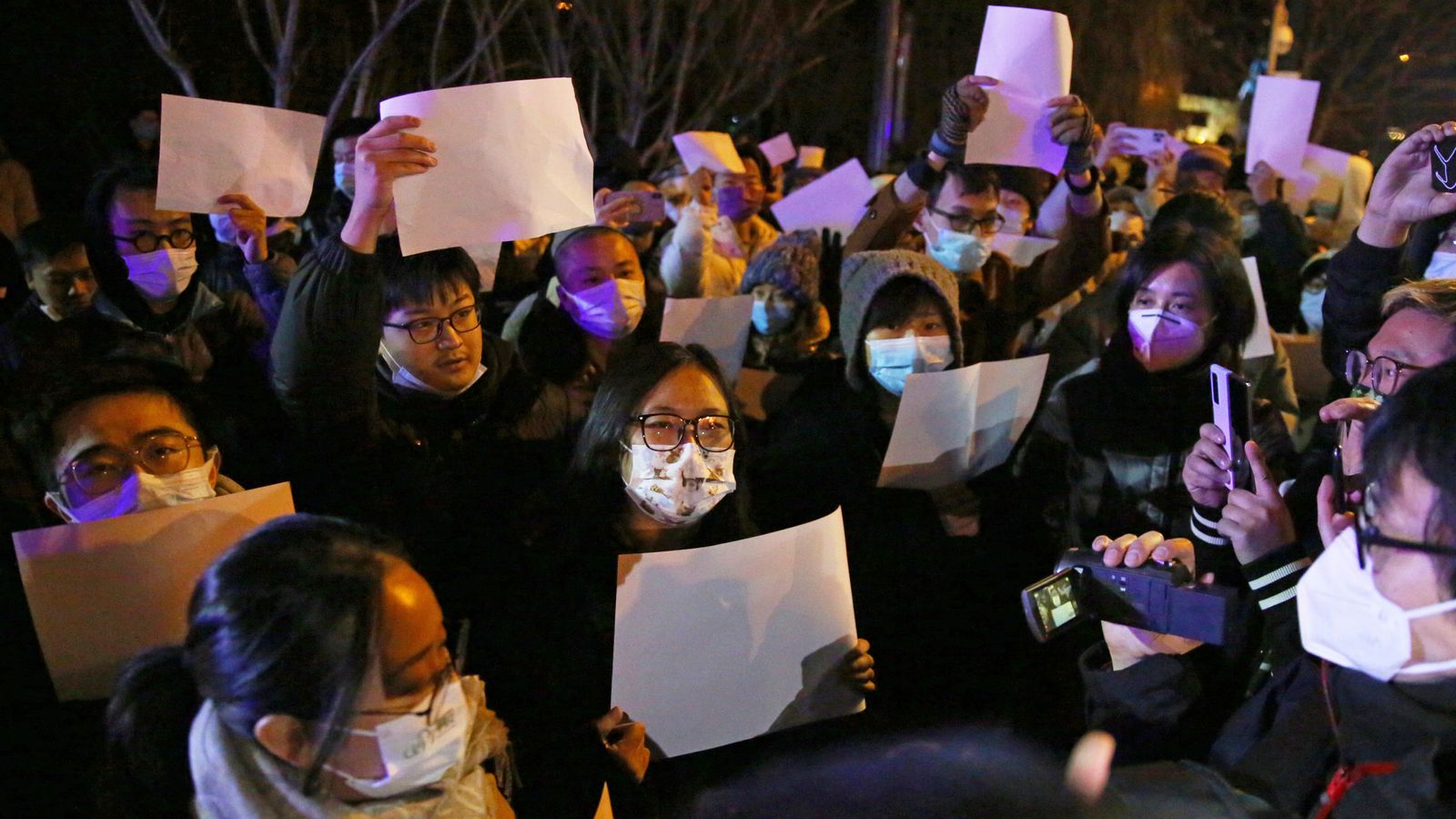The Chinese Communist Party has boxed itself into a dilemma.
People want an end to draconian zero-COVID restrictions, but easing them could lead to a massive wave of COVID deaths because the country is simply not prepared.
COVID-Zero started nearly three years ago, when the first lockdown was announced in Wuhan in January 2020.
For much of the pandemic, it worked – China’s death rate has been very low throughout, especially compared to the UK and US.
‘Utterly extraordinary’ scenes as protesters shout ‘down with Xi Jinping’ – latest updates
Zero-COVID certainly bought time – but China didn’t use it well.
Instead of using it to vaccinate and to improve its medical system, it poured vast resources into testing and into lockdowns to try and keep up with the spread of Omicron – and all the misery that entails for people living under zero-COVID.
China protests: Tensions in Shanghai remain ‘very, very high’ as mass groups disperse
China: More than 30 years after Tiananmen Square, students are again on frontline of protest
I lived through China’s COVID lockdowns for the best part of three years – it’s a miserable existence
There has never been a clear exit strategy, according to Professor Francois Balloux, director of the UCL Genetics Institute.
“It’s a bit of a chicken and egg problem,” he told Sky News.
“Once you’re stuck, like China was, in this idea that you could suppress transmission of the virus, maybe there was not this urgency to get people vaccinated and think about the future.”
Please use Chrome browser for a more accessible video player
As a result, China has a very low rate of elderly vaccination.
The figures for two doses aren’t bad. But only 68.5% of people aged over 60 – the most vulnerable – have received a booster.
Hong Kong had similarly low levels of vaccination amongst the elderly. When Omicron surged out of control there, it recorded the highest death rate the world had seen.
Hong Kong is interesting for another reason: the population had received a mix of Western and Chinese vaccines.
There have been doubts about the effectiveness of the latter, and calls for China to allow the import of Western mRNA vaccines – which it so far has refused to do.
Please use Chrome browser for a more accessible video player
Read more:
Tensions in Shanghai remains ‘very, very high’ as mass groups disperse
More than 30 years after Tiananmen Square, students are again on frontline of protest
One study, published in the Lancet, showed that two doses of BioNTech, also known as Pfizer, were much more effective than Coronavac, the Chinese vaccine, against severe disease and death.
But three doses of either vaccine was just as effective, at around 97%. So the problem isn’t the type of vaccine: it’s that not enough people had it.
Hong Kong’s experience does not bode well for China.
“Over a few days they had massive, massive mortality,” Prof Balloux told Sky News.
“And I would say China is in a worse situation, Hong Kong has a good health care system, probably had slightly better vaccination rates – so yes it could be pretty grim.”
China doesn’t have the healthcare capacity that Hong Kong had.
It only has 3.6 intensive care beds per 100,000 people – ranking far below other nations.
Please use Chrome browser for a more accessible video player
As a result, Chinese experts have predicted the unchecked spread of Omicron would simply overwhelm China’s healthcare system – the demand would be 15.6 more than capacity.
There would be nearly three million admissions to intensive care – and more than one and a half million deaths.
All of those problems might be fixed with the political will.
But China has trumpeted its zero-COVID policy as proof of the superiority of its system compared to other countries.
The problem is that the Chinese people are looking at other countries – and thinking that life there looks a lot better.






















